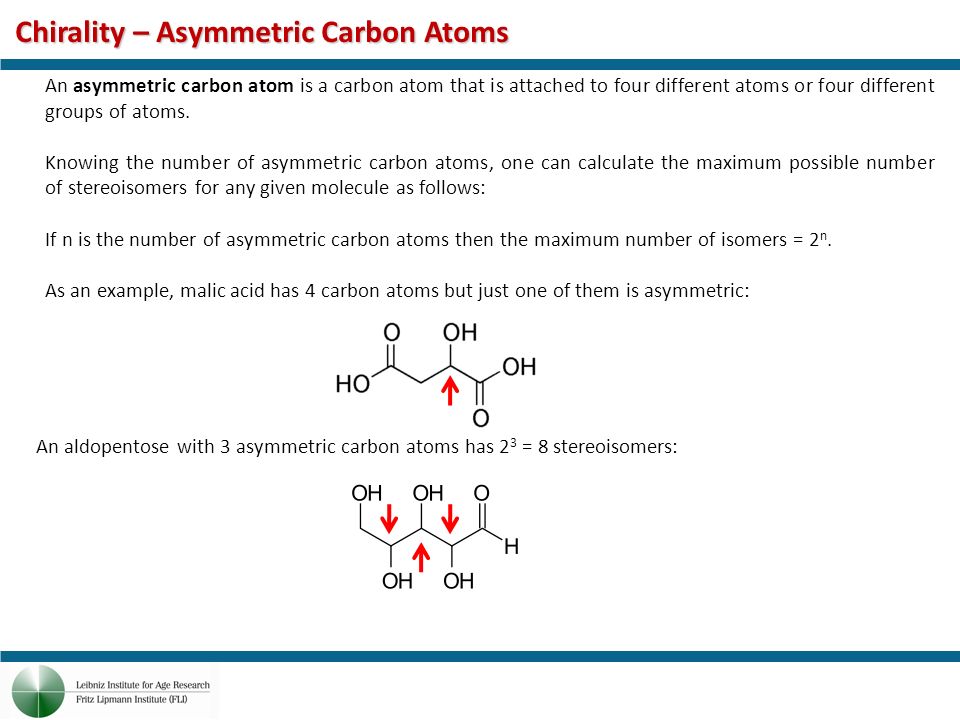
An asymmetric carbon has 4 different atoms or groups of atoms bonded to it. This type of central carbon atom can also be known as a chiral carbon[1].

Chiral carbon is the carbon atom about which all the 4 groups are different. Any carbon atom which has 2 groups different can also be called asymmetric but for optical activity to show, all the 4 carbons should be different. : a carbon atom in union with four atoms or groups no two of which are alike, compounds containing such a carbon atom being capable of existing in two optically active forms which are distinguished by being respectively levorotatory and dextrorotatory and also in some cases by having enantiomorphous crystal forms See the full definition. For compounds containing several asymmetric carbon atoms, it is essential to specify which carbon atom was compared with glyceraldehyde. When the R - S system is used, the absolute configuration must be stated for each asymmetric carbon atom in the molecule. Asymmetric carbon atom definition is - a carbon atom in union with four atoms or groups no two of which are alike, compounds containing such a carbon atom being capable of existing in two optically active forms which are distinguished by being respectively levorotatory and dextrorotatory and also in some cases by having enantiomorphous crystal forms.
Catalytic asymmetric carbon–carbon bond formation via allylic alkylations with organolithium compounds. 3, 377–381 (2011). CAS Google Scholar.
An example of a molecule that contains an asymmetric carbon is an amino acid. This is because these molecules contain a central carbon atom attached to an amino group, carboxyl group, hydrogen atom and a variable side chain[2].

References

- ↑ Berg, J., Tymoczko, J. and Stryer, L. (2011). Biochemistry. Basingstoke: Palgrave Macmillan. p27
- ↑ Hartl, D. and Ruvolo, M. (2012). Genetics. Burlington, MA: Jones & Bartlett Learning. p347
Asymmetric Carbon Examples
Asymmetric Carbon Definition
